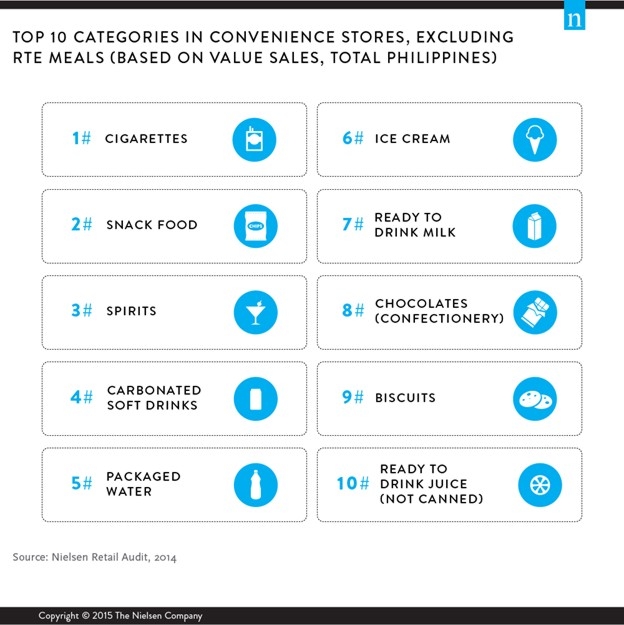With the projected expansion of cities and urban centers in the next 10 years, expect the convenience-driven lifestyle to be a key influencer of Filipinos’ shopping habits and way of life.
As growth goes beyond megacities to second-tier cities, incomes and purchasing power is increasing. On the flipside, urbanization means faster paced lifestyles, and consumers’ time will become an increasingly precious commodity. To cope, consumers will look for products and services which provide convenience.
Nielsen’s latest Shopper Trends report highlights increasing patronage of convenience stores, with 29% of Filipino shoppers saying that they have visited convenience stores in the past four weeks, up from just 8% in 2012. And the most common mission for shoppers visiting convenience stores is buying a meal or snack or to fulfil a craving for a particular food or beverage. To tap into this growing demand convenience stores are expanding their assortment of ready-to-eat (RTE) food and a growing number are providing in-store areas where shoppers can dine and socialize.
The convenience store is also increasingly addressing shoppers’ immediate or urgent needs, with tobacco, snacks, ready-to-drink (RTD) beverages, spirits and ice cream all ranking among the top categories sold in convenience stores.
This quest for convenience will have a lasting impact across the retail and grocery manufacturing landscape. To remain relevant, retailers and manufacturers must consider convenience beyond store format. Developing products, packaging, formats or sizes that are driven by consumers’ changing lifestyles and the growing need for convenience is essential. Likewise, store formats and environments must continue to evolve to deliver ease of shopping and allow shoppers to get in and out of the store quickly.



![[Industry Survey]](https://pana.com.ph/wp-content/uploads/GLOBE-1-400x250.jpg)
